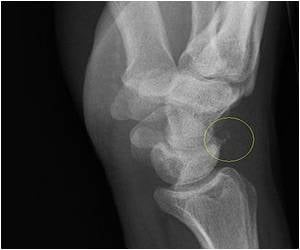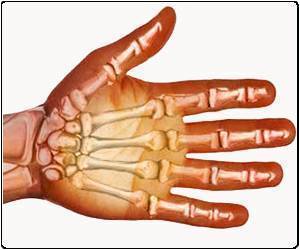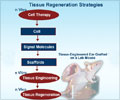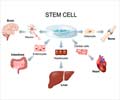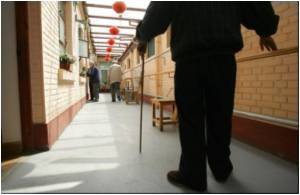
Unlike skin, cartilage can't repair itself when damaged. For the last decade, Elisseeff's team has been trying to better understand the development and growth of cartilage cells called chondrocytes, while also trying to build scaffolding that mimics the cartilage cell environment and generates new cartilage tissue. This environment is a 3-dimensional mix of protein fibers and gel that provides support to connective tissue throughout the body, as well as physical and biological cues for cells to grow and differentiate.
In the laboratory, the researchers created a nanofiber-based network using a process called electrospinning, which entails shooting a polymer stream onto a charged platform, and added chondroitin sulfate—a compound commonly found in many joint supplements—to serve as a growth trigger. After characterizing the fibers, they made a number of different scaffolds from either spun polymer or spun polymer plus chondroitin. They then used goat bone marrow-derived stem cells (a widely used model) and seeded them in various scaffolds to see how stem cells responded to the material.
Elisseeff and her team watched the cells grow and found that compared to cells growing without scaffold, these cells developed into more voluminous, cartilage-like tissue. "The nanofibers provided a platform where a larger volume of tissue could be produced," says Elisseeff, adding that 3-dimensional nanofiber scaffolds were more useful than the more common nanofiber sheets for studying cartilage defects in humans.
The investigators then tested their system in an animal model. They implanted the nanofiber scaffolds into damaged cartilage in the knees of rats, and compared the results to damaged cartilage in knees left alone.
They found that the use of the nanofiber scaffolds improved tissue development and repair as measured by the production of collagen, a component of cartilage. The nanofiber scaffolds resulted in greater production of a more durable type of collagen, which is usually lacking in surgically repaired cartilage tissue. In rats, for example, they found that the limbs with damaged cartilage treated with nanofiber scaffolds generated a higher percentage of the more durable collagen (type 2) than those damaged areas that were left untreated.
Advertisement
"Creating a nanofiber network that enables us to more equally distribute cells and more closely mirror the actual cartilage extracellular environment are important advances in our work and in the field. These results are very promising," she says.
Advertisement
Source-Eurekalert

